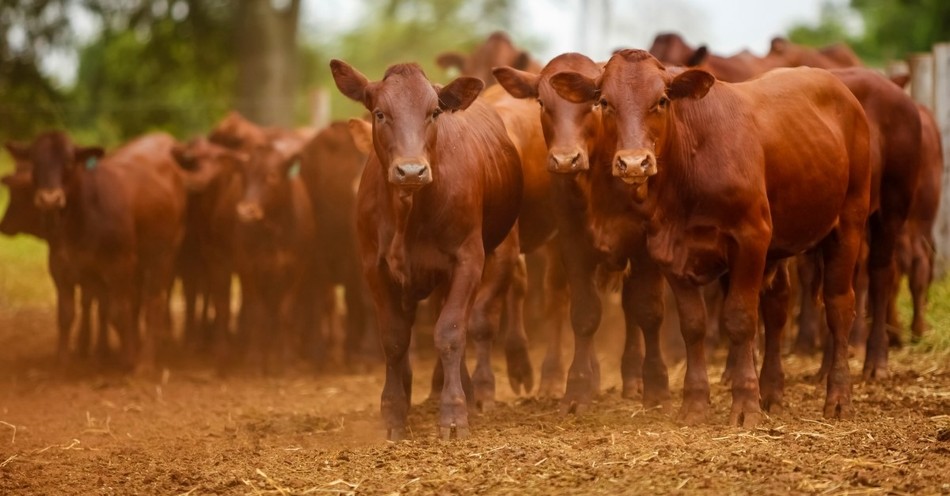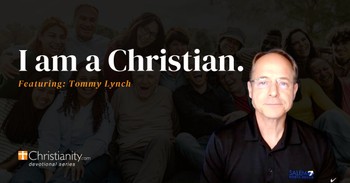In September 2022, the Jerusalem Post described how a Christian farmer in Texas raised and shipped five unblemished red heifers, delivered to the Temple Institute in Jerusalem. The heifers were inspected and approved by Jewish rabbis. Upon the arrival of these five red heifers, a group of roughly 300 people welcomed them. One person blew the shofar, a horn used in Judaistic ceremonies. The red heifers are now secured on a farm in Haifa. These heifers are being carefully monitored to ensure they remain without blemish, as required for the sacrificial rites described in the Torah.
According to recent reports, the sacrifice of one of these heifers could potentially take place as early as 2024, specifically around Passover, which falls on April 22nd, 2024. This timeline aligns with the age the heifers need to reach before they can be considered for sacrifice. The chosen location for this significant event is on the Mount of Olives, which is viewed as a scripturally appropriate site for such a ceremony, directly east of the Temple Mount .
This development has not only religious but also political implications, particularly due to the location's sensitivity in Jerusalem, where religious sites of Judaism and Islam are closely intertwined. The preparation and potential sacrifice of a red heifer are seen by some as fulfilling biblical prophecies, which adds layers of complexity involving various community beliefs and expectations. This has sparked discussions and concerns among different groups, reflecting the profound historical and spiritual significance of these events.
What exactly made this event so exciting? Let's take quick look at the meaning and dive deeper into this the prophecy from the Bible book Revelations.
Quick Facts About the Biblical Importance of Red Heifers
The preparation of red heifers for slaughter in Jerusalem is a significant event in Jewish religious practice, deeply rooted in biblical laws and eschatological expectations. According to the Torah, specifically in Numbers 19, a red heifer that is completely free of physical defects and has never been yoked is required for a purification ritual. This ritual is essential for removing ritual impurity related to contact with a dead body, which is necessary for those participating in Temple services.
The significance of preparing red heifers today, especially in Jerusalem, is tied to the anticipation of rebuilding the Third Temple—a pivotal event in both ancient prophetic texts and contemporary eschatological beliefs. For many observant Jews, particularly those aligned with certain Orthodox groups, the presence of a red heifer that meets all biblical requirements is seen as a step towards fulfilling these prophecies and reinstating Temple services. The red heifer’s ashes, once the animal has been sacrificed and burned, are used to create water of purification, which is critical for both the priests and worshipers to achieve ritual purity.
This act has also captured the attention of certain Christian evangelical groups who see the preparation of a red heifer in Jerusalem as fulfilling biblical prophecy related to the end times. Thus, the preparation and potential sacrifice of a red heifer not only holds religious significance within Judaism but also intersects with Christian eschatological themes, making it a highly watched and symbolic event in both religious communities.
What Does the Bible Say about Red Heifers?
Numbers 19:1-10 explains the directive God gave Moses and Aaron regarding red heifers (red female cows). The people of Israel were to bring a defect- and blemish-free heifer that had never carried a yoke. Unlike other offerings made inside the camp, the priest Eleazar was to take the red heifer outside the camp and slaughter it. Eleazar was then to “take some of its blood with his finger” and sprinkle it seven times toward the front of the tent of meeting (Numbers 19:4). At that point, the whole red heifer, including its dung, would be burned in Eleazar’s sight. The priest would then add cedarwood, hyssop, and scarlet yarn to the fire along with the red heifer (the why of the scarlet yarn or “wool” is a mystery).
The overseeing priest could return to camp only after he bathed himself and washed his clothes, but he would remain unclean until the evening. Likewise, the one who burned the red heifer was to wash his clothes, bathe, and remain unclean until evening.
A clean man then gathered the ashes of the red heifer and “deposited them in a clean place,” again outside the camp. The Bible then explains that the ashes “are to be kept by the Israelite community for use in the water of cleansing; it is for purification from sin” (Numbers 19:9). Whoever gathered the ashes would also need to wash his clothes, and he would be unclean until evening. The Lord added this proviso: “this will be a lasting ordinance both for the Israelites and for the foreigners residing among them” (Numbers 19:10).
Once the Israelites had the red heifer’s ashes properly stored, they would use them to cleanse unclean people. Numbers 19:11-22 outlines an important way someone could become unclean (touching dead bodies) and how to combine the ashes with clean running water then sprinkle the mixture with hyssop on the person to be cleansed.
What Is the Significance of Red Heifers in Israel?
As early as the Apostle Paul’s letters to the Thessalonian church in A.D. 51, saints have at least partially focused on Christ’s return—His second advent (1 Thessalonians 4:13-18). Some Christians emphasize everything they trust will transpire around the time of Jesus’ return. Various signs and prophecies from their Bible interpretation define their eschatological beliefs. The appearance of unblemished red heifers heralds an event not seen in 2,000 years. Orthodox Jews longing to build the third temple to reinstitute the Old Testament sacrificial system need red heifers to resume rituals. According to some Christians, the biblically prescribed “perfect” red heifer means more than that: it signals the end of the age.
What Are Red Heifers Used for in Judaism?
My Jewish Learning tells us the Hebrew term for red heifer is parah adumah and describes how the red heifer’s ashes are used for purification rites.
Today, most Orthodox Jews still desire to follow this purification rite. In the modern-day Torah reading, the verses in Numbers describing the rite are including in the final reading on Shabbat Parah, the Sabbath of the Red Heifer. The Sabbath of the Red Heifer occurs on the last Shabbat of the month of Adar, shortly before Passover. The most recent Sabbath of the Red Heifer took place on Friday, March 25, 2022. The next one will occur on Friday, March 10, 2023.
Because spiritual cleanliness matters so much in the Old Testament, anyone who enters the temple must be clean. The Jerusalem Post article explains how these purification requirements mean that Orthodox Jews need red heifers before they build the third temple. They seek to obey the Lord’s command to the letter as their hope to build the third temple is realized.
Do Red Heifers Have End Times Significance?
For Christians holding to a premillennial view of eschatology, even just one rabbi-approved red heifer arriving in Jerusalem means the rapture is imminent. They believe a third temple will be built during the End Times, at which point all the other prophecied events will follow.
For followers of Judaism, the arrival of the red heifer indicates the Messiah will come. According to one Judaistic custom, the Mishnah records only nine perfect red heifers were used between the time of the Tabernacle to A.D. 70 (when Roman soldiers destroyed the second temple). The arrival of a possible tenth perfect red heifer means hope for the Messiah’s appearance and the temple’s rebuilding. Jewish scholar Maimonides held that the tenth animal “would only be found and sacrificed when King Messiah was ready to appear.”
Observant Jews await the fulfillment of Ezekiel 36:25-26, which they call the haftarah. Adherents say this text addresses a purification—a cleansing from human sinfulness—by God. In this interpretation, God will sprinkle clean water on them, cleansing them from their sins, then give them a “new heart and put a new spirit into you.” This renewal of the person and the nation encompasses Judaism’s theme of redemption at Passover.
Four major branches of modern Judaism exist. While Reformed and Reconstructionist Jews reinterpret the Torah and other Judaistic practices in attempts to modernize Judaism, Conservative Jews embrace almost all of the Torah. Orthodox Jews go even further and insist on traditional rituals (as far as can be followed in contemporary society). Jerusalem lacking a temple creates limits on what traditional rituals can be fully performed. King Solomon constructed the first temple, destroyed during the Babylonian invasion. Ezra and Nehemiah detail how the second temple was built when King Darius let the Jews return to Judea. The temple stood, with some renovations by Herod the Great, until Romans destroyed it.
The Orthodox Jews are at the forefront of efforts to construct the third temple in Jerusalem as they await their promised Messiah. These efforts include blueprints for the temple, making temple instruments and fixtures, and identifying priests from the line of Levi. All of these elements are currently in place (the priests are undergoing training from the Nezer HaKodesh Institute for Kohanic Studies). Many Jews look to Haggai, whose author was involved in the second temple’s construction, for their promise of peace once the temple is complete (Haggai 2:9).
Even with the arrival of the five red heifers, there could still be complications. Some Orthodox Jews maintain sacrifices cannot proceed without the ashes from the original red heifer mixed in with the new ashes. Others point out that the Temple Institute previously thought they had unblemished red heifers, but those red heifers developed blemishes. Anything “less than perfect” will not be acceptable. Furthermore, the sacrifice of the red heifer must happen before the animal reaches its third year. So, excitement will wane if the five Texas-raised red heifers mature with even one hair of a different color. Even if the heifers pass inspection and are used, Orthodox Jews want the new temple where the first one was located. Unfortunately, as has been discussed many times before, the Muslim Al-Aqsa Mosque sits squarely atop the location believed to be where Solomon’s temple stood.
According to Jews who want the third temple built, their Messiah King will come to rule once the temple is complete. The question is, where will it be placed? Premillennial Christians believe that whenever and wherever the third temple is built, its completion means the End Times have arrived.
What Does the Bible Say about Jesus’ Sacrifice?
The Biblical regulations regarding the red heifer are often seen as a precursor to the sacrifice of Christ, highlighting similar symbolic elements. Like the red heifer, which was required to be without any defects, Christ is described in the New Testament as being without sin. The red heifer was sacrificed outside the boundaries of the camp as prescribed in Numbers 19:3, which mirrors the crucifixion of Jesus outside the walls of Jerusalem. Just as the ashes of the red heifer were used for purification from death, Christians believe that the sacrifice of Jesus cleanses believers from the eternal consequences and corruption of sin.
For Christians, Hebrews 4:14 points to Christ being the Messiah and the Great High Priest. Hebrews 9:11-14 gives more details about Christ’s qualifications as a high priest. He is the high priest of “the good things that have come…through the greater and more perfect tent.” He entered through His own blood as our sacrifice. The blood of goats and bulls (nor a red heifer) is no longer needed. Christ’s redemptive work is finished and eternal. Hebrews 4:13-14 highlights this point:
“For if the blood of goats and bulls, and the sprinkling of defiled persons with the ashes of a heifer, sanctify for the purification of the flesh, how much more will the blood of Christ, who through the eternal Spirit offered Himself without blemish to God, purify our conscience from dead works to serve the living God.” (Italics added)
When we consider the above passage along with John 19:30, where Jesus declared, “It is finished,” we have to wonder why rebuilding a temple and reinstituting sacrifices would be necessary. Whatever the answer is, it will come as we wait for the Lord. As we do, we are to walk in obedience as we “occupy until the Lord comes” (Luke 19:13), living as His ambassadors of the gospel (2 Corinthians 5:20) until Jesus comes for His bride, the church.
Further Reading:
Back From Captivity, Jews Completed the New Temple
Second Purification of the Temple
What Do We Know about Solomon's Temple?
Photo Credit: Getty Images/ Eric Sacco

This article is part of our larger End Times Resource Library. Learn more about the rapture, the anti-christ, bible prophecy and the tribulation with articles that explain Biblical truths. You do not need to fear or worry about the future!
The Second Coming of Jesus
Who Are the 144,000 in Revelation?
Who Are Gog and Magog in the Bible?
What Is the Apollyon?
Is the Apocalypse Mentioned in the Bible?
Signs of the End Times and the Rapture



